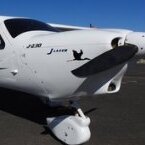-
Posts
3,464 -
Joined
-
Last visited
-
Days Won
47

RFguy replied to Kyle Communications's topic in AUS/NZ General Discussion

RFguy replied to Kyle Communications's topic in AUS/NZ General Discussion

RFguy replied to Kyle Communications's topic in AUS/NZ General Discussion

RFguy replied to Kyle Communications's topic in AUS/NZ General Discussion

RFguy replied to Kyle Communications's topic in AUS/NZ General Discussion

RFguy replied to Kyle Communications's topic in AUS/NZ General Discussion

RFguy replied to Kyle Communications's topic in AUS/NZ General Discussion

RFguy replied to Kyle Communications's topic in AUS/NZ General Discussion

RFguy replied to Kyle Communications's topic in AUS/NZ General Discussion

RFguy replied to Kyle Communications's topic in AUS/NZ General Discussion

